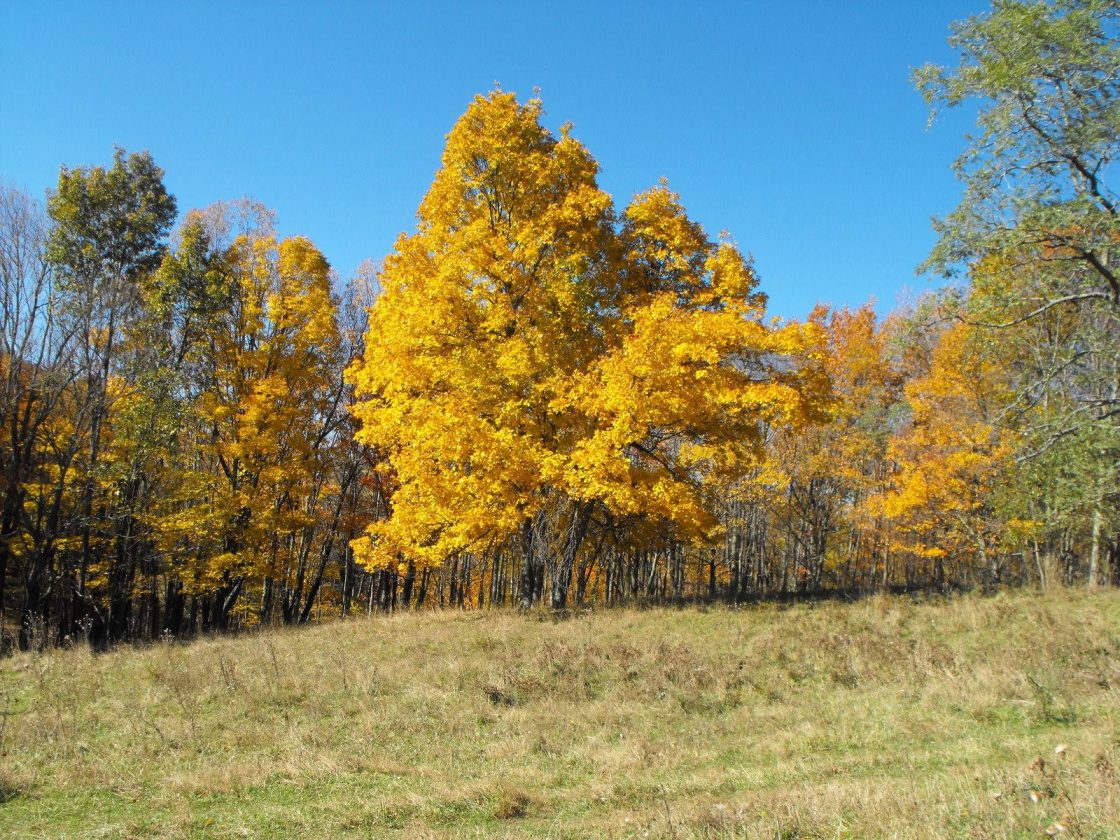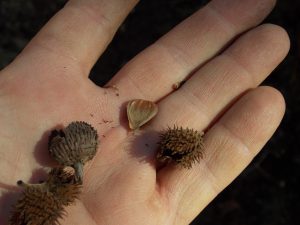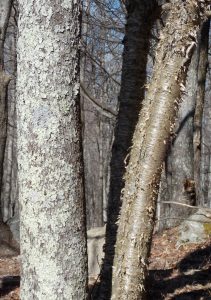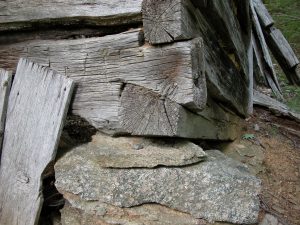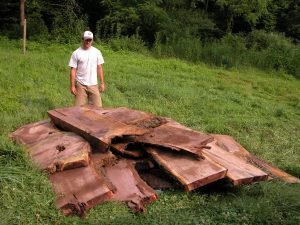“A sea of forest to the horizon.”
 This is how the Appalachian Mountains were described by various explorers starting in the early 1600s, and it was exactly that: millions of acres of beautiful trees. Let’s take a look at the Appalachian forest, now and before the time of European settlement.
This is how the Appalachian Mountains were described by various explorers starting in the early 1600s, and it was exactly that: millions of acres of beautiful trees. Let’s take a look at the Appalachian forest, now and before the time of European settlement.
In the period from the last glacial maximum (LGM) of approximately 25,000 years ago to today there have been many changes in the forest that covers the Appalachian Mountains. In fact, were we to just discuss the last 15,000 years or so, it would probably take several volumes, so we will be brutally short in this conversation. The point is that over this period, because of natural climate variability (different temperature and moisture regimes over time), and latitude, and because of differences in elevation from the river bottoms to the tops of the mountains, we have a wide variety of vegetation types, both historically and currently.
Humans are now thought to have arrived in North America, based on archaeological finds since the early 1990’s, between 22,000 and 25,000 years ago. Our central Appalachian region then looked nothing like it does today. In fact, up to approximately 15,000 years ago our elevations above 3000 feet were probably tundra, with the forest joining this a spruce-fir association. As you descend in elevation from that point, either you find the Northern hardwood association of beech-birch-maple on the north faces of the mountains, and on the south our oak-hickory-chestnut forest. Today at the highest elevations of the central Appalachians you can still find the spruce-fir forest (Whitetop Mountain and Mt. Rogers, Virginia are a good examples), and on the north faces of these big mountains we still find the northern hardwood association.
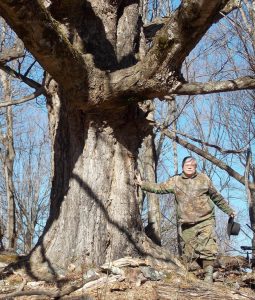 Today we most often encounter our oak-hickory forest; at one time the American Chestnut made up one quarter of the trees found in this association but that component was lost with the introduction of the Chestnut blight (a fungal infection) in 1904. By 1940 the American Chestnut was, for all intents and purposes, wiped out, and on a personal note, I consider this the worst natural disaster in modern Appalachian history. The chestnut was used for everything in early Appalachian life; the nuts were eaten (and used for flour) and used to fatten livestock, the bark was used in leather tanning and making mountain medicines, and the wood for home building, fencing, furniture and of course for firewood. As late as the 1970’s one could still find standing dead chestnut in the Appalachians and some of this wood was salvageable; one of the photos accompanying this article is a monarch American Chestnut ‘stump’ over 60 feet tall I photographed in 1973. That particular tree was over 6 feet thick at shoulder-height. The chestnut continues to hang on in the Appalachians, in the form of stump sprouts, and there are some isolated instances where there is a tree or two still living long enough to produce fruit. In 1973 I sat with Dr. Boyd Dearden in his office at the University of Tennessee-Knoxville, where I was a student, and we ate a shoe-box full of chestnuts I had gathered from some of these stump sprout-trees on Buck Mountain the weekend before. A great deal of research is still on-going on the chestnut and I have hope that one day perhaps my grandchildren will again see American chestnut growing on our mountains.
Today we most often encounter our oak-hickory forest; at one time the American Chestnut made up one quarter of the trees found in this association but that component was lost with the introduction of the Chestnut blight (a fungal infection) in 1904. By 1940 the American Chestnut was, for all intents and purposes, wiped out, and on a personal note, I consider this the worst natural disaster in modern Appalachian history. The chestnut was used for everything in early Appalachian life; the nuts were eaten (and used for flour) and used to fatten livestock, the bark was used in leather tanning and making mountain medicines, and the wood for home building, fencing, furniture and of course for firewood. As late as the 1970’s one could still find standing dead chestnut in the Appalachians and some of this wood was salvageable; one of the photos accompanying this article is a monarch American Chestnut ‘stump’ over 60 feet tall I photographed in 1973. That particular tree was over 6 feet thick at shoulder-height. The chestnut continues to hang on in the Appalachians, in the form of stump sprouts, and there are some isolated instances where there is a tree or two still living long enough to produce fruit. In 1973 I sat with Dr. Boyd Dearden in his office at the University of Tennessee-Knoxville, where I was a student, and we ate a shoe-box full of chestnuts I had gathered from some of these stump sprout-trees on Buck Mountain the weekend before. A great deal of research is still on-going on the chestnut and I have hope that one day perhaps my grandchildren will again see American chestnut growing on our mountains.
Trees do not live forever. However, they can live a very, very long time compared to humans. As trees developed over time they diversified into many families, genera and species, and in our Appalachian Mountains we have a great diversity of these species. Just on the mountain property where I hunt one can find five species of oak, four species of hickory, three species of maple, two species of birch, two of walnut, two of locust, and one of our more rare Appalachian species, the basswood. We also find there black cherry, buckeye, sycamore, hemlock, white pine, service-berry, white and green ash, yellow poplar and American beech. I have always been enamored with the beech tree, an ancient species that has the peculiar habit of casting all of its seeds at one instant. Twice I have personally seen this, and it is remarkable to be standing under a mature beech when thousands of beechnuts fall all at once. The beech is the last tree to lose its leaves in the fall (many hold their brown and seemingly dead leaves through the winter) and the first to bud in the spring, an adaptation from their evergreen evolutionary roots. High in the Great Smoky Mountains are some beech ‘gaps’, where monarch beech trees over 8 feet thick and 120 feet tall lord themselves over the surrounding forest, a truly awe-inspiring sight.
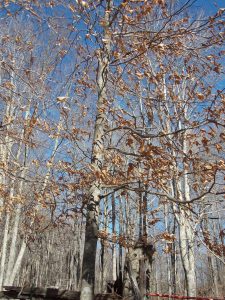 The forest of the Appalachian mountains is a renewable resource; most of the forested land today has at some point or the other been completely cut over and regrown to the stands we see today, and many of these stands have been cut and regrown many times since the 1600’s. The Native Americans regularly burned areas of forest, both to enhance habitat for game and later, for agriculture. Europeans coming to the mountains found that in clearing land for agriculture around their farmsteads they could also reap the benefits of fire for improvement of game populations. With the invention of the narrow gauge railroad and the demand for timber for building, mining and industry, it became economically feasible to reach the stands further upslope in the mountains, and by the 1930’s most of the mountain forest in the central Appalachians had been cut. Today if proper professional, scientific forestry and silvicultural methods are followed we will have Appalachian forest land for the future, forests that can be both utilized and preserved.
The forest of the Appalachian mountains is a renewable resource; most of the forested land today has at some point or the other been completely cut over and regrown to the stands we see today, and many of these stands have been cut and regrown many times since the 1600’s. The Native Americans regularly burned areas of forest, both to enhance habitat for game and later, for agriculture. Europeans coming to the mountains found that in clearing land for agriculture around their farmsteads they could also reap the benefits of fire for improvement of game populations. With the invention of the narrow gauge railroad and the demand for timber for building, mining and industry, it became economically feasible to reach the stands further upslope in the mountains, and by the 1930’s most of the mountain forest in the central Appalachians had been cut. Today if proper professional, scientific forestry and silvicultural methods are followed we will have Appalachian forest land for the future, forests that can be both utilized and preserved.
I believe those folks that settled here would be glad to know that we care.

